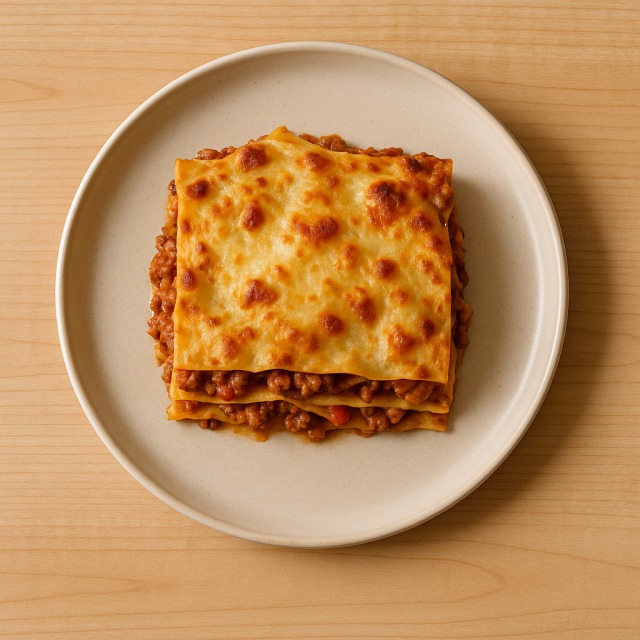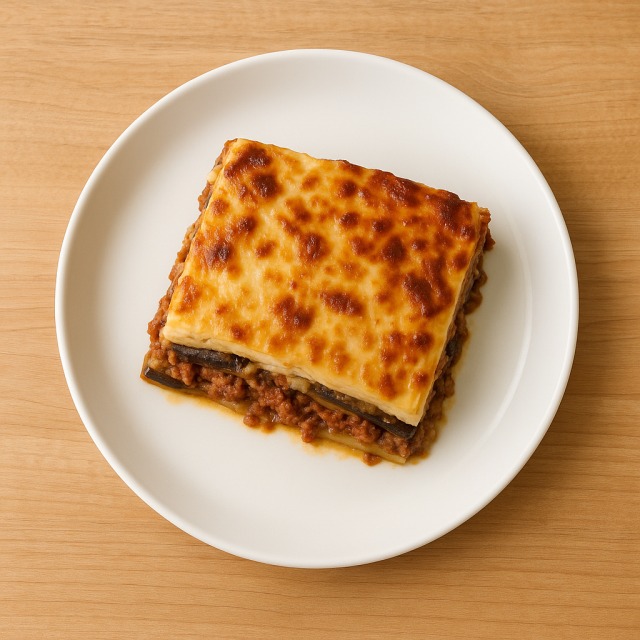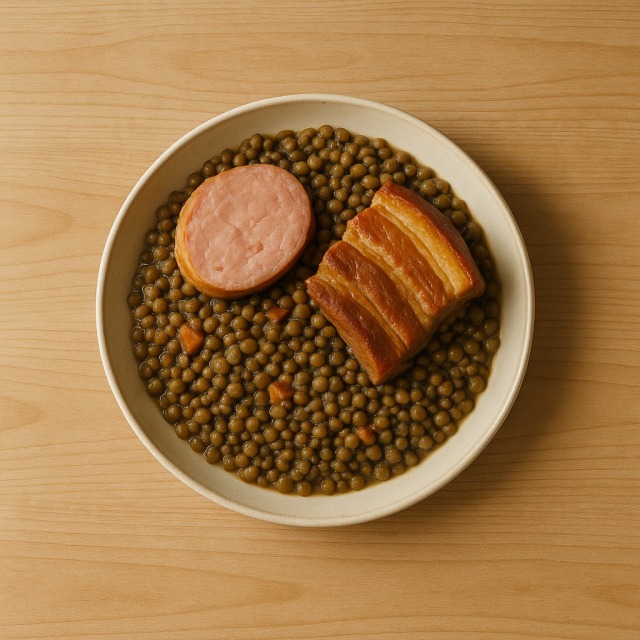Calorie Chart / Recipes / Lasagne Bolognese
How Many Calories Are in Lasagne bolognese?
Calculation of the nutritional value & Recommended Dietary Intake of lasagne bolognese
For g and a calorie requirement of kcal
| Calories 525 kcal | Proteins 27 g | Lipids 23 g | Carbohydrates 51 g |
| 26% | 36% | 34% | 19% |
Health benefits of lasagne bolognese

Lasagne bolognese - 100g
Calories 150 kcal
Proteins 7.7 g
Lipids 6.7 g
Carbohydrates 14.7 g
Lasagne bolognese is a moderate-calorie dish thanks to its average density of calories compared with richer gratins or fried foods. Those calories mainly come from a balanced mix of slow-release carbohydrates in the pasta sheets, high-quality proteins in the ground beef, and lipids from cheese and olive oil.
The tomato component supplies vitamin C, lycopene, and potassium, while the beef layer contributes bioavailable iron, zinc, and B-group vitamins (B3, B6, B12) that support energy metabolism and red blood cell formation—useful information for anyone who is counting calories yet needs micronutrients. The béchamel or cheese topping provides calcium and phosphorus for bone health. Although not considered a vitamin bomb, lasagne bolognese still offers selenium, vitamin A precursors, and a little magnesium, all delivered in a single portion whose calories can be adjusted by the size of the slice.
Historically, the recipe was popularized in Emilia-Romagna in the 19th century, long before nutrition labels listed calories, and it became a staple of Sunday family meals. Knowing its cultural background can help you enjoy the dish mindfully: a reasonable serving keeps calories under control while providing a sense of tradition and satiety.
Tips for incorporating lasagne bolognese into a balanced diet
If you want to keep an eye on calories without giving up flavor, serve a modest slice of lasagne bolognese with a generous side of spinach sautéed in garlic; the fiber will help you feel full for fewer total calories. Another idea is to start the meal with a bowl of chilled gaspacho, which is rich in water and low in calories, so you are less tempted to take a second helping of pasta.
To lower calories but keep the creamy texture, replace part of the béchamel with thickened light yogurt and use lean ground beef or even part turkey cutlet mince. For athletes needing extra proteins without excessive calories, add a layer of grilled eggplant; it soaks up flavor while barely nudging the calorie count.
In batch cooking, alternate lasagne nights with dishes such as chicken curry with rice or a comforting vegetable soup to vary nutrients and avoid a string of high-calorie meals. Remember: portion control is the simplest way to master calories—one palm-sized slice generally stays around 300 calories, leaving room for a green salad drizzled with light vinaigrette.
Frequently Asked Questions
- How many calories are in lasagne bolognese?
- Lasagne bolognese contains 150 calories per 100 g.
- Is lasagne bolognese high in calories compared with plain pasta?
- Yes, the addition of meat, cheese, and béchamel raises the calories versus plain boiled pasta, but it remains a moderate-calorie comfort food when eaten in sensible portions.
- Can I reduce calories by using whole-wheat sheets?
- Whole-wheat versions do not drastically cut calories, but the extra fiber helps satiety, so you may consume fewer calories overall.
- Does reheating lasagne change its calories?
- No, reheating does not create or remove calories; it only redistributes moisture and fat.
- What size portion keeps calories around 400 kcal?
- A 260 g serving—roughly a thick slice the size of two decks of cards—delivers about 390 calories.
Similar foods
Information provided by Calorie Menu may contain inaccuracies or errors. It cannot, under any circumstances, substitute medical advice or medication.










